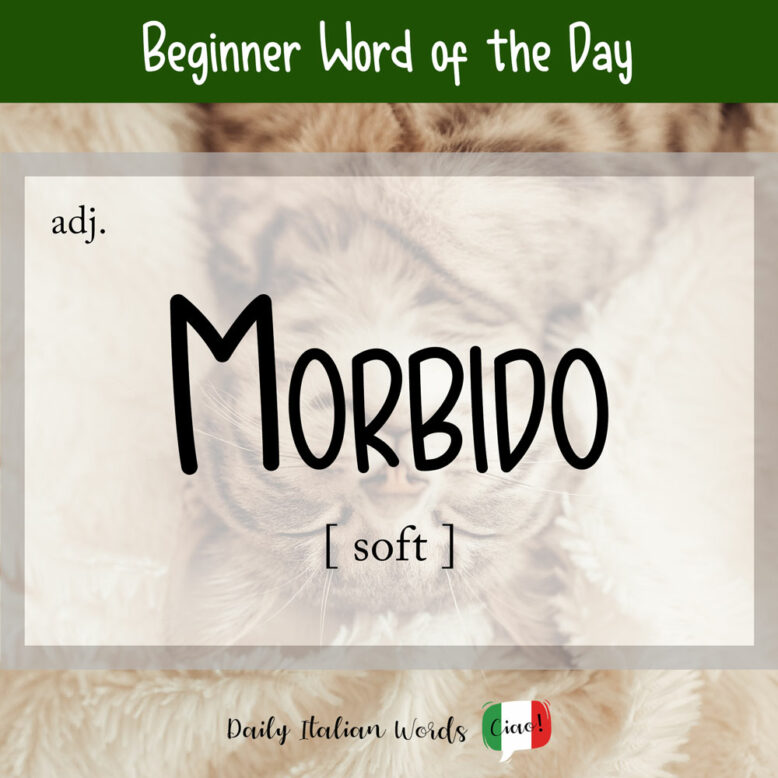The Italian word morbido may look and sound a lot like the English word morbid but don’t be fooled: these two terms are actually false friends!

The correct translation for morbido is soft whereas morbid is morboso. What’s interesting is that morbido and morbid can both be traced back to the same Latin root morbus (disease), yet somehow neither retained the original meaning. Talk about a fascinating case of divergent evolution!
To read an interesting theory about why these two words assumed the meanings they did, check out the blog English-Language Thoughts.
Like all Italian adjectives that end in o, the ending changes depending on whether the subject is masculine, feminine or plural.
- morbido (singular, masculine)
- morbida (singular, feminine)
- morbidi (plural, masculine)
- morbide (plural, feminine)
In the arts and photography, a piece that is delicate and harmonious in terms of its tones, hues, and lines can also be called morbido. In the case, the ideal translation is either soft or subdued.
La fotografia di Andrea è morbida e poco dettagliata, quasi surreale.
Andrea’s photography is subdued and not very detailed, almost dreamy.
Morbido can also work as a noun in some cases, referring to something that is soft. For example, the phrase camminare sul morbido means to walk on soft (ground) whereas dormire sul morbido means to sleep on (something) soft.
Two related words you may come across are the diminutive morbidino and the augmentative morbidone. The suffix -ino in morbidino denotes smallness (e.g. coniglio morbidino = soft little bunny) whereas -one denotes largeness (e.g. cane morbidone = big soft dog).

Heather Broster is a graduate with honours in linguistics from the University of Western Ontario. She is an aspiring polyglot, proficient in English and Italian, as well as Japanese, Welsh, and French to varying degrees of fluency. Originally from Toronto, Heather has resided in various countries, notably Italy for a period of six years. Her primary focus lies in the fields of language acquisition, education, and bilingual instruction.


